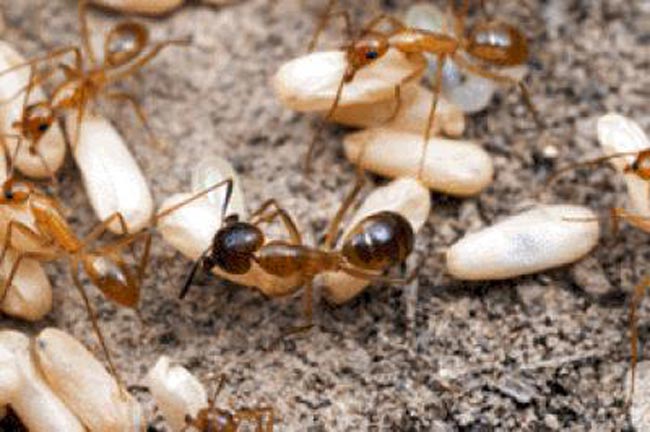Ants Store Fat for Lean Times

Having an extra ounce of fat is unforgivable for many gym goers, but for ants, it's a matter of livelihood and they do all they can to store some of this energy source.
And they share.
When times are good and food is plenty, ants invest heavily in storing fat so that they can use it when famine strikes, a new study finds. They can pass the fat through oral secretions to other members of their colony or through unfertilized eggs when needed.
"Understanding the regulation of nutrient reserves, particularly fat storage, at the individual and colony levels is critical to understanding both the division of labor characteristics of social insect colonies and the evolution of important colony life-history traits such as the timing of reproduction, founding mode, and over-wintering behavior," said Daniel Hahn of the University of Florida.
Hahn examined two closely related species of ants to see how they differ in storing fat. Both groups of ants live in similar habitats but are genetically diverse and can be differentiated by their respective dark and light body colors.
"The dark ones had more fat per unit of lean mass, while the light ones had more large soldiers that were fat," Hahn told LiveScience.
In general, ant colonies contain two kinds of workers: large, soldier ants and regular-sized workers. Soldier ants can store more fat than the workers. The study found that the light-colored ants had more fat soldier ants. The dark ants, however, had more lean worker ants than soldiers, but a lot more of them, making their total fat as a group equal to the light-colored ants.
Sign up for the Live Science daily newsletter now
Get the world’s most fascinating discoveries delivered straight to your inbox.
"Differences in individual-level storage tactics between the two desert species could lead to significant behavioral differences, perhaps in the rate that individuals progress through behavioral development, or in their motivation to forage or defend their nests," Hahn said.
The study will be detailed in the September-October issue of the journal Physiological and Biochemical Zoology.










